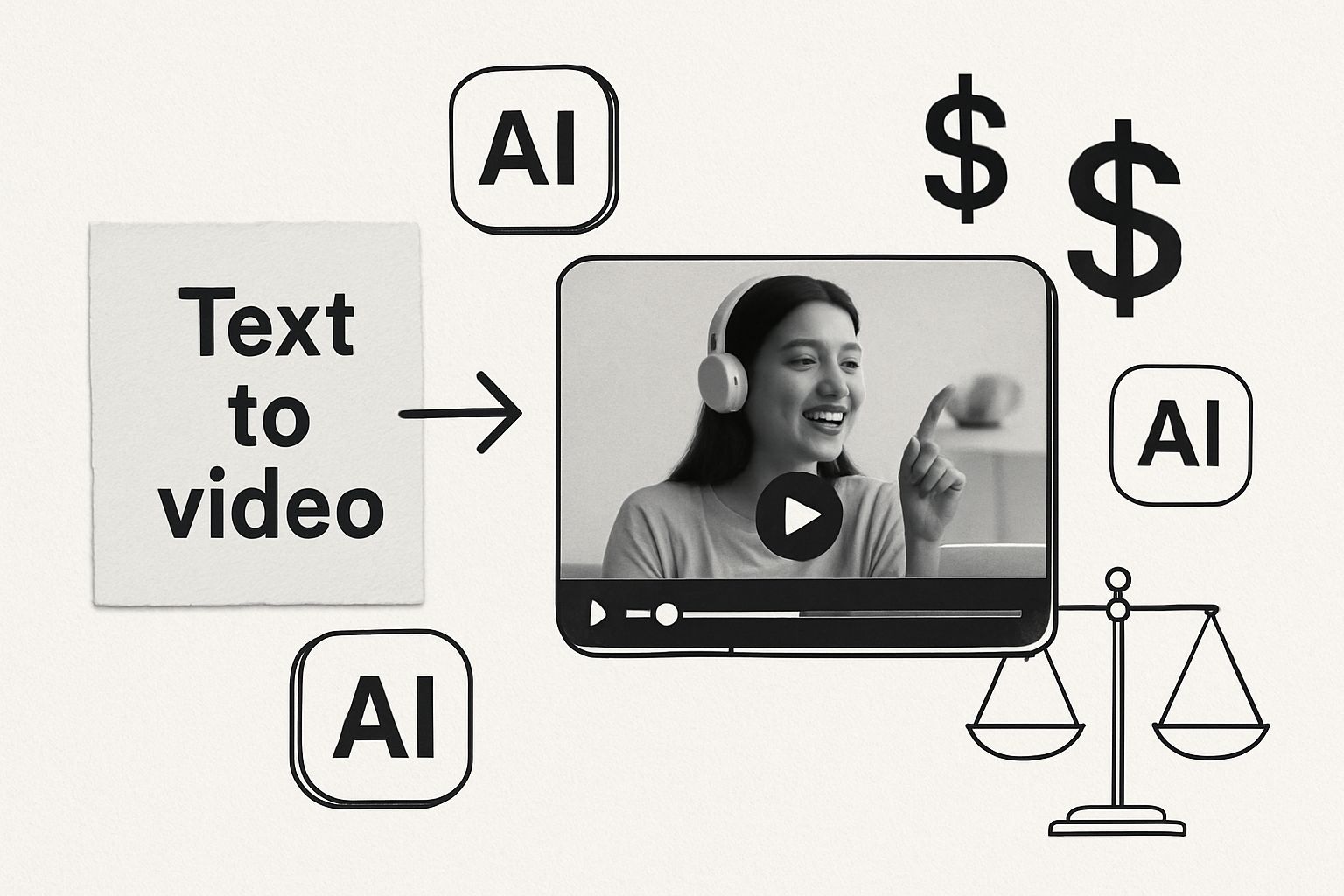
AI CERTS
2 months ago
AI content generation drives new social video battle

Grand View Research values the broader AI media market at thirty-three point seven billion dollars for 2025.Those dollars chase new formats, faster monetization, and unprecedented scale. However, deepfakes and copyright lawsuits already shadow the boom.
This report maps the opportunities and tensions shaping the next era.
Market Growth Signals Strength
Demand metrics around AI content generation underscore investor optimism.
Moreover, Instagram video time jumped thirty percent year over year in Q3 2025.
Meta reported a fifty-billion-dollar Reels run rate, proving ad hunger for fresh clips.
OpenAI's Sora two app attracted millions of downloads within weeks, according to multiple outlets.
Consequently, compute and moderation budgets ballooned across startups.
Grand View Research expects the AI in media segment to grow twenty-four percent annually until 2030.
Such projections fuel acquisitions and record funding rounds.
Therefore, market momentum appears sustainable despite controversies.
- Instagram video time up 30% YoY
- Reels run rate exceeds $50B
- AI media market forecast $33.7B 2025
These numbers reveal solid foundations.
However, strategy execution will decide winners in the next chapter.
Platform Strategies And Friction
Platform owners now merge feeds with generative engines.
OpenAI bundles Sora two inside a leaderboard-driven mobile network.
Additionally, Meta’s Movie Gen research promises prompt-based video editing inside Instagram composer screens.
That design accelerates AI content generation while locking attention within proprietary gardens.
In contrast, startups like Runway and Pika Labs prioritize browser workflows and cross-platform exports.
Nevertheless, all vendors now face the same legal friction over likenesses and copyrighted materials.
OpenAI has already rolled out granular rightsholder controls after CAA and MPA interventions.
Subsequently, Meta previewed watermarking and revenue-sharing concepts to pre-empt criticism.
These maneuvers illustrate reactive governance.
Consequently, platform differentiation increasingly rests on policy agility rather than model horsepower.
Creator Benefits And Risks
For creators, promise and peril coexist.
Generative media shortcuts expensive shoots, enabling one-person studios to post daily.
Furthermore, AI content generation lets marketers A/B test countless variants without fresh crews.
UGC tools built into Sora allow fans to remix branded characters into personalized storylines.
Similarly, social AI features on Instagram suggest clever prompt completions and trending audio.
However, the same velocity spawns deepfakes, harassment, and automated spam campaigns.
Consequently, creators risk reputational harm if their likeness appears in unauthorized clips.
Moreover, AI content generation may saturate feeds, reducing organic reach for traditional videos.
- Lower production costs
- Instant global reach
- Heightened impersonation threats
These dynamics demand balanced guardrails and transparent incentives.
Therefore, next moves from platforms will determine creator trust.
Legal Storms Intensify Now
Lawyers view the trend through a harsher lens.
CAA publicly questioned OpenAI over compensation for talent featured in synthetic shorts.
Meanwhile, studios lobby for opt-in training regimes and stronger default blocks on recognizable characters.
In contrast, OpenAI cites fair-use arguments and rapid iteration as business necessities.
Additionally, watermark technology and provenance metadata appear insufficient against determined removal tools.
Therefore, regulators may mandate certified signatures for AI content generation in sensitive contexts.
Such mandates could reshape global compliance costs.
Nevertheless, industry groups still debate enforcement responsibility.
These disputes represent an ongoing power struggle.
Consequently, legal clarity remains elusive as the next section shows.
Technology Trends Shape Roadmap
Under the hood, diffusion and transformer architectures keep improving temporal coherence.
Runway, Pika, Luma, and Sora now support keyframe control and 1080p renders.
Moreover, social AI pipelines increasingly integrate live audio synthesis for lip-synced dialogue.
Generative media tooling also embeds C2PA credentials directly into metadata at rendering time.
However, parallel watermark removal models emerge within days, reflecting an arms race.
Consequently, providers explore cryptographic signatures anchored on public blockchains.
Furthermore, chip vendors deliver specialized encoders to cut inference costs by half.
These hardware gains lower thresholds for AI content generation across mobile devices.
Therefore, technical momentum feeds business experimentation.
Such evolution prepares the ground for new revenue models ahead.
Business Models Evolve Quickly
Revenue questions dominate boardroom conversations.
Subsequently, OpenAI introduced credit bundles and premium tiers for frequent video generation.
Meta, meanwhile, eyes advertising gains from an expanded pool of AI content generation clips.
Moreover, the company plans creator revenue shares once Movie Gen ships broadly.
Startups pursue subscription models or enterprise licences, mirroring Synthesia’s corporate trajectory.
Additionally, branded UGC tools unlock sponsored generative media templates for fandom campaigns.
In contrast, some platforms test tipping and NFT style collectible outputs.
Consequently, diversified monetization hedges against compute price shocks.
These experiments depend on sustainable demand.
Therefore, user retention fueled by AI content generation remains the decisive metric.
Verification And Future Steps
Authenticating clips becomes mission-critical for journalists and regulators.
Newsrooms are updating standard operating procedures to include C2PA checks and reverse-image queries.
Furthermore, Meta and OpenAI promise visible moving watermarks, yet researchers break them within hours.
In response, startups explore browser extensions that verify signatures before sharing.
Moreover, social AI dashboards may flag questionable uploads using ensemble classifiers.
Professionals can enhance their expertise with the AI+ UX Designer™ certification.
Additionally, educational badges and UGC tools boost creator credibility when producing generative media assets.
Therefore, transparent skills and tooling uplift ecosystem trust.
These measures will reinforce safe AI content generation across global platforms.
Consequently, industry alignment sets the stage for scalable innovation.
Social video now sits at the crossroads of creativity, capital, and compliance.
OpenAI, Meta, and nimble startups push technical boundaries while racing to appease rightsholders.
Moreover, investors reward platforms that convert rapid experimentation into recurring revenue.
Nevertheless, watermark fragility and legal uncertainty threaten user trust.
Consequently, professionals should watch policy moves as closely as model upgrades.
Join the next wave by enrolling in specialized programs or sharing your perspective with our editorial team.



